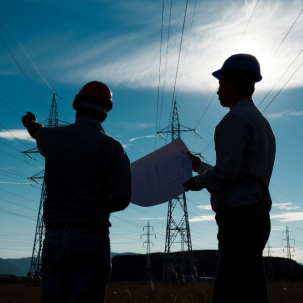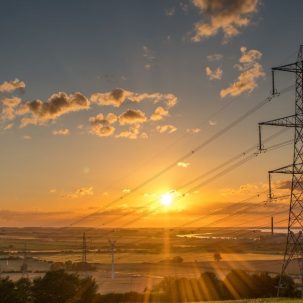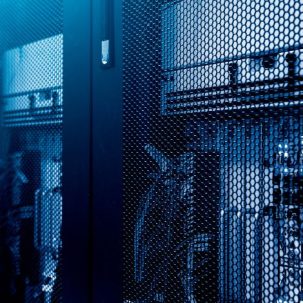Utilities and grid or system operators can use flexibility and flexibility marketplaces in many ways to meet the requirements and challenges of different locations across their distribution networks. Four main flexibility market types can address those requirements and help system operators trade distributed flexibility, making more efficient use of the electricity network.
The end action is often the same for each market type. Rather than turning down or turning up generation, the electricity is simply used in a different location and/or time. However, the reason for buying flexibility and who is doing the buying or trading can differ in each.
This guide covers the following market types:
How flexibility markets work
Traditional, bilateral contracts are pre-agreed, one-to-one arrangements that provides committed flexibility over a longer period.
A flexibility market is an open, dynamic way to buy grid services from multiple participants via standardised products and transparent rules in a recurring and easily scalable way. This enables price discovery and ensures that an “optimal” price can be achieved.
Markets operationalise flexibility by enabling DSOs to provide incentives for flexibility providers to adjust their energy use in response to grid needs.
Markets enables the delivery of flexibility as follows:
- The distribution utility or system operator identifies a need: For example, it detects an upcoming congestion or imbalance
- The operator uses the marketplace to signpost the opportunity: “50MW reduction needed in Manchester, 5-7pm tomorrow, paying £xx/MWh”
- Assets respond with offers: Batteries, industrial sites, buildings etc can all offer capacity
- The market platform or grid operator optimises dispatch: The operator can select the most cost-effective combination
- Assets deliver the flexibility: Assets adjust consumption/generation as contracted
- Settlement processed: Payments for services are based on the amount of flexibility delivered.
Different regions require different approaches. New York’s dense population with high electricity demand suits demand response markets. Scotland’s abundant wind but sparse population benefits from constraint markets. Multiple market types can operate simultaneously based on local requirements.
The main types of flexibility market
1. Demand response
What is demand response?
Demand response – or demand-side flexibility – focuses on managing the use of energy by end consumers.
That end user is financially incentivised to change their use of electricity at a specific time or in a particular place.
In many cases, demand response markets engage with smaller distributed energy resources (DERs) and aggregations at lower voltage levels of the network. The end user can also be residential or industrial and commercial (C&I).
What’s the role of a system operator in demand response?
System operators can use this service to help manage the system during load peaks, or to maximise the use of local variable renewable generation, for example. They may also use demand response to promote load shifting. That means asking the end consumer to move their electricity consumption to a different time.
Demand response programmes have been in used for many years for procuring flexibility, particularly in the US where utilities have long managed peak demand. However, demand response flexibility markets take this further, moving from load reduction programmes to creating transparent, competitive markets. In these markets, system operators can procure location-specific demand reductions, reward participants through clear price signals, and address constraints exactly where and when they occur on the network.
2. Local constraint management
What are constraints?
Network constraints occur when energy can’t be transmitted or distributed from the source of generation to different points of consumption due to limited network capacity. This happens during periods of excess generation due to the limitations of the electricity network – a network that will have to cope with demand for electricity that’s expected to double by 2050.
How can distributed flexibility markets help manage constraints?
When a constraint occurs on the network, the system operator – either at transmission or distribution level – has to take an action, such as restricting the ability of generators to export their power. This is called “curtailment”, which we address in the next section.
System operators would therefore pay DER operators acting as flexibility service providers – demand, generation, or batteries – to change their behaviour at the time and location of the network constraint.
A flexibility marketplace can facilitate these trades. The system operator can more dynamically manage the constraints in their existing network at least cost, by trading the ability of FSPs to be flexible in a market.
3. Local curtailment
What is curtailment?
Curtailment is when the system operator restricts the ability of generators to export their power. This is to reduce stress on the transmission grid or distribution network.
What is a local curtailment flexibility market?
Local curtailment flex markets focus on assets, specifically at times when network constraints may result in curtailment.
A curtailment marketplace allows trading of curtailment obligations between assets and distributed energy resources (DERs).
This may include asking local demand to turn up, to counteract the upcoming curtailment of a generator.
How does a local curtailment market work?
Depending on the flex market design, an asset may trade out of or into curtailment.
Rather than curtailing a generator when it’s faced with a constraint, another demand customer is found to absorb the excess energy that’s being generated. This avoids the need to curtail renewable generators and miss out on the cheap clean energy produced.
How does project BiTraDER help make curtailment management easier?
This what our work on the BiTraDER project will explore. This project involves trialling a flexibility marketplace for curtailment obligation trading on ENWL’s DNO network. It aims to set out a blueprint for integrating third-party market platforms with network operating systems.
To avoid curtailment, DERs with curtailable connections will be able to pay DERs with non-curtailable connections to take their position in the curtailment stack.
4. Community energy
What is community energy?
Community energy is about matching demand and generation at the hyper-local level. That means asking consumers to shift their demand to times when local renewable energy sources are producing power.
How can community energy be used?
A community energy market can be as simple as when local prosumers sell their excess solar energy to their neighbours.
The aim is to try to match consumption to times when the consumer can access more clean energy from their local area.
How these markets can be used in practice
Once the traits and challenges of an area are understood, the right flexibility market archetype – or multiple markets – can be deployed to trade flexible DER capacity. For example, our work with network utility London Hydro on Project L2L.
What did Project L2L want to achieve?
The utility was in the process of building its DSO capabilities to better manage its network. It therefore wanted to improve its management of DERs.
The first aim of its project was to create more visibility over DERs. The second was to access the benefits of locally connected DERs. And the third was to encourage the use of DERs by consumers.
Which flex market archetypes were deployed?
The second and third aims fit into two of our flex market types above, which led to the creation of two markets to trade flexibility around:
- Demand response events: The utility could buy demand turn down services from its customers to help ensure grid stability during periods of high demand
- Community energy events: Local prosumers could sell their excess solar energy to their fellow, local customers
How did flexibility markets help?
The demand response events – encouraging local consumers to provide demand turn down services – saw a 52% average participation rate.
There was a 40% participation rate in community energy events. This encouraged those same consumers to turn up their demand when more local energy was being produced. Overall, this meant an uptick in the amount of clean energy that could be produced and consumed locally.
This is just one way that flex markets can work in practice, and how multiple market types can be used to achieve a larger, overarching goal.
Want to learn how to get started with distributed flexibility markets? Download our checklist.



